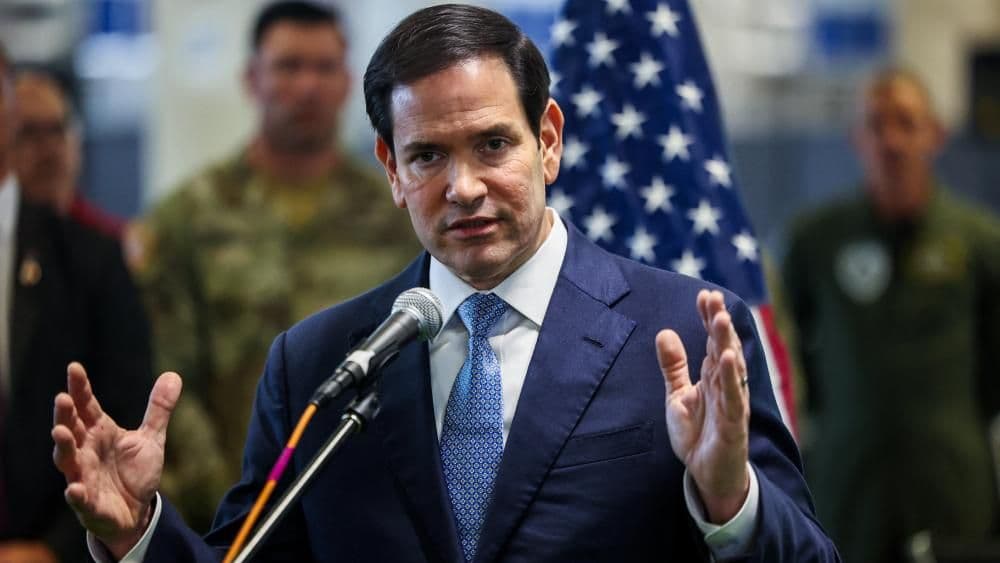We're loading the full news article for you. This includes the article content, images, author information, and related articles.
US Secretary of State Marco Rubio confirms progress on an international stabilization force for post-war Gaza, a critical part of a US-led peace plan. For Kenya, this major diplomatic effort signals a potential shift in global security arrangements

JERUSALEM–US Secretary of State Marco Rubio announced on Friday, October 24, 2025, that numerous countries have expressed willingness to participate in an International Stabilization Force (ISF) for Gaza. Speaking during a visit to Israel, Rubio emphasized that any participating nation must be one that Israel is “comfortable with,” signaling that Israel will have significant influence over the force's composition. This multinational force is a cornerstone of a 20-point peace plan advanced by the administration of US President Donald Trump, aimed at establishing long-term security in the Gaza Strip following the devastating two-year war. “There’s a lot of countries that have offered to do it,” Rubio stated at a press conference at a US-led Civil-Military Coordination Center in Kiryat Gat, southern Israel. While a definitive list of participants has not been finalized, a US advisor previously mentioned that Indonesia, the United Arab Emirates, Egypt, Qatar, and Azerbaijan have shown interest. The United States is coordinating the effort and has approximately 200 troops in Israel tasked with planning, logistics, and monitoring the fragile ceasefire that began on October 10, 2025, but has clarified it will not deploy its own soldiers into Gaza. Discussions are ongoing about securing a United Nations mandate for the force, a requirement for some potential troop-contributing countries.
The push for a stabilization force comes after two years of intense conflict, which was triggered by a Hamas-led attack on southern Israel on October 7, 2023. During the attack, militants killed approximately 1,200 people, mostly civilians, and took 251 individuals hostage into Gaza, according to official Israeli figures. The subsequent Israeli military campaign in the Gaza Strip has resulted in a catastrophic humanitarian crisis. As of October 2025, the Gaza Health Ministry reports that more than 68,000 Palestinians have been killed, with tens of thousands more wounded. These figures are considered credible by the United Nations and other international observers, although the exact distinction between civilian and combatant casualties remains difficult to verify independently. A report from Brown University's Costs of War project, updated in early October 2025, cited similar figures, noting that casualties represented over 10% of Gaza's pre-war population. The ceasefire, which went into effect on Friday, October 10, 2025, remains tenuous, with both Israel and Hamas accusing each other of violations. Israeli officials have cited delays in the return of hostages' remains, while Hamas has pointed to Israeli military actions in areas under its control as breaches of the agreement.
The formation of the ISF is seen as a critical step to prevent a power vacuum in Gaza and ensure that the territory does not again become a threat to Israel. Secretary Rubio stated that Hamas “cannot be involved in governing Gaza in the future.” The US plan envisions the ISF training and supporting a vetted Palestinian police force to handle long-term internal security. While the initiative is a significant global diplomatic undertaking, direct involvement from East African nations has not been publicly confirmed. For Kenya and the region, the success or failure of this peace plan carries substantial indirect implications. The Middle East is a key partner in trade and security, and prolonged instability could have ripple effects on global energy prices, shipping routes, and the fight against international terrorism. The establishment of a multinational force in such a volatile area will be closely watched as a potential model for future international conflict resolution efforts. Further progress on the force’s deployment and the broader peace plan will depend on ongoing negotiations and the adherence of all parties to the current ceasefire. The situation on the ground remains complex and subject to rapid changes. FURTHER INVESTIGATION REQUIRED.
Keep the conversation in one place—threads here stay linked to the story and in the forums.
Other hot threads
E-sports and Gaming Community in Kenya
Active 6 months ago
Popular Recreational Activities Across Counties
Active 6 months ago
The Role of Technology in Modern Agriculture (AgriTech)
Active 6 months ago
Investing in Youth Sports Development Programs
Active 6 months ago